I have a program which outputs between 1 to 4 pandas data frames, each with the structure below:
a b
time
2008 11.61 11.99
2009 12.54 10.66
2010 13.64 12.34
2011 14.02 13.20
In each case the rows may increase if I add years and columns may increase if I add cities but in each of the four dataframes different databases return results for the same years and the same cities.
I'm tring to write a function that can automate the step where I combine all data frames and create a large figure representing all of them.
To do it with 2 dataframes, I would write:
df1 = "pandas function goes here"
df2 = "pandas function goes here"
fig, ([ax1, ax2]) = plt.subplots(1, 2, figsize=(10, 5))
df1.plot(ax=ax1)
df2.plot(ax=ax2)
plt.show()
To do it with 3 dataframes, I would write:
df1 = "pandas function goes here"
df2 = "pandas function goes here"
df3 = "pandas function goes here"
fig, ([ax1, ax2, ax3]) = plt.subplots(1, 3, figsize=(15, 5))
df1.plot(ax=ax1)
df2.plot(ax=ax2)
df3.plot(ax=ax2)
plt.show()
Noticing a pattern, I've tried to automate it with
ax_list = []
dataframe_list = []
plot_num = 4
for i in range(plot_num):
exec(f'dataframe_{i} = "pandas function goes here"')
dataframe_list.append(f'dataframe_{i}')
ax_list.append(f'ax{i}')
if i == plot_num - 1:
exec(f'fig, ({exec(", ".join(ax_list))}) = plt.subplots(1, {(plot_num + 1)}, figsize=({(plot_num + 1) * 5}, 5))')
for x in range(len(dataframe_list)):
# print(f'{dataframe_list[i]}')
exec(f'{dataframe_list[x]}.plot()')
plt.show()
I'm getting the error below
File "3.py", line x (the one that starts with exec(f'fig)), in f'fig, ({exec(", ".join(ax_list))}) = plt.subplots(1, {(plot_num + 1)}, figsize=({(plot_num + 1) * 5}, 5))') File "", line 1, in NameError: name 'ax0' is not defined
Please help so that I can automate the pandas dataframes all displayed in one single figure. (Note, I'm not sharing the pandas functions for brevity sake, I can share them if you think its relevant)

